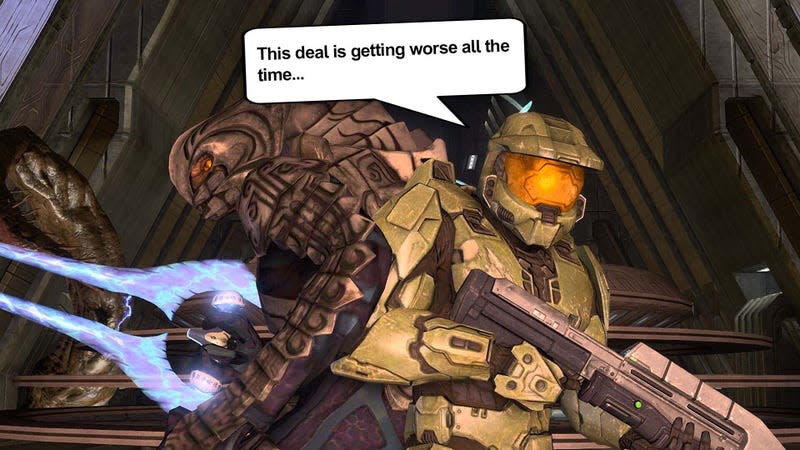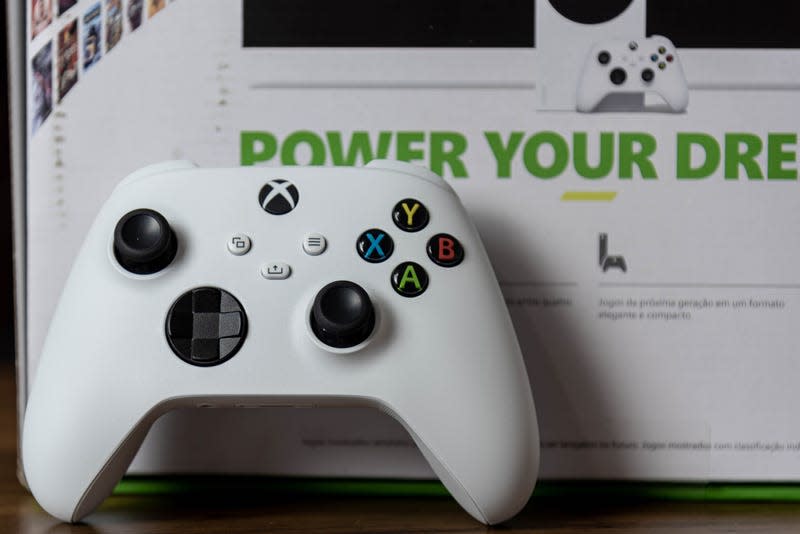The Best Deal In Gaming Keeps Getting Worse

Xbox Game Pass started out feeling like a frivolous boondoggle aimed at distracting from the Xbox One’s lack of hit exclusives. Then, it became the best deal in gaming thanks to a steady expansion of the Netflix-like subscription library with major third-party releases and critically acclaimed indies. Now it’s bigger than ever and getting worse all the time. Once pitched as the promised land for Xbox players, it’s now becoming another dead end.
“For us, it’s all about how we reach 2 billion gamers.” That’s how Microsoft Gaming CEO Phil Spencer described Game Pass’s goal on stage at a tech conference back in 2018. The subscription service would move beyond consoles and PCs to target everyone with a smartphone and an internet connection. Over five years later, there are 34 million Game Pass subscribers, which according to Digital Trends would make it the eighth most popular service if it were a movie and TV streaming platform, neck-and-neck with Peacock.
Normally, platforms try to reach critical mass before hitting the “enshitification” inflection point. But rather than aggressively double down on Game Pass as the future of Xbox by continuing to increase value and keep prices cheap, Microsoft seems to be slamming the breaks on its risky subscription experiment, announcing not just the second price hike in a year but a substantial retreat from the everything, everywhere, at one simple price ethos that launched it in the first place.
Quick and dirty chart by me to display the new Xbox Game Pass structure (subject to correction).
I hope this helps. pic.twitter.com/Qj6CX7i4kG— Klobrille (@klobrille) July 10, 2024
On Wednesday, Microsoft revealed an overhaul of the subscription gaming program more confusing than the pre-order bonus chart for your favorite Electronic Arts game. Game Pass will still have four tiers, three for console and one for PC, but the benefits, names, and prices are changing. Most notably, the basic Xbox Game Pass subscription tier, simply called “Game Pass for Console,” is turning into Game Pass Standard, going from $11 a month to $15, gaining Xbox Live, and losing access to day-one Game Pass releases and certain other games in the full Game Pass library.
The Game Pass library already got splintered once with Game Pass Core, which contains a very limited slice of first and third-party Xbox games, and now it’s happening again, though we won’t know the full extent of the fragmentation until more details are announced in the coming months. Current Game Pass for Console subscribers will stay grandfathered in as long as their membership stays on auto-renew. But for everyone else, the only way to keep access to day-one releases will be to sign up for Game Pass Ultimate, which now costs a whopping $240 a year, or roughly the cost of the frequently discounted Xbox Series S.

These changes just happen to be coming ahead of Call of Duty Black Ops 6 launching on the service in October, a likely 2024 best-seller that appears to have pushed Game Pass’s internal calculus to the breaking point and then shattered it. It’s one of the games Microsoft spent $69 billion to buy Activision Blizzard for, an acquisition whose main legacy so far appears to be mass layoffs and fewer exclusives. Playing Diablo IV’s comeback season on Game Pass has been nice, but it wasn’t worth Tango Gameworks closing, a decision seemingly precipitated in part by newfound scrutiny on Xbox’s bottomline following the close of the historic merger.
When Game Pass launched in 2017, the fate of the Xbox One was sealed. A bungled launch and a lack of first-party hits to cut through the noise left Microsoft out in the wilderness. So it purchased a bunch of studios to bolster its portfolio and built up a subscription service Sony couldn’t compete with, one that had the potential to grow beyond consoles. Xbox players have spent the first half of a new console generation waiting for that to all change, but it effectively hasn’t. A stellar not-E3 showcase this summer was still aimed at the future, or in the case of a new Gears prequel, the ancient past.
But through all of it there was Game Pass, the service that you could recommend to friends and family without qualifiers or caveats. It had day-one access to Halo and Forza Horizon, timeless classics like Fallout and Elder Scrolls, and some of the biggest indie hits of the year, as well as a bunch you never would have discovered otherwise. Adding Blizzard games and Call of Duty should have made it even better. Instead, they’re turning the service into something that feels more like a toll booth than a bargain. Rather than basking in the freedom of a gaming buffet, there’s the guilt of trying to make sure you get your money’s worth.
My conspiracy theory take here is that Game Pass has done irreparable harm to the way players perceive the value of games on Xbox and MS is trying to sabotage it to nudge people into buying games again. https://t.co/UPqq7hso4M
— Liam (@liamrobertson.bsky) (@Doctor_Cupcakes) July 9, 2024
Nothing puts the value trade-off as starkly as what Microsoft isn’t changing about Game Pass for PC. While the subscription is going from $10 to $12, it will still get access to day-one games and remains free of the monthly cost of playing games online on consoles. Instead of $240 a year for Game Pass Ultimate, PC players can play Black Ops 6 with their friends for just $144. There’s a version of Game Pass that’s still the best deal in gaming, it turns out. It’s just not on Xbox anymore. And maybe that’s the entire point: having potentially cannibalized its own console storefront by training some of its players not to buy things, Microsoft is trying to poison the well just enough to make buying Indiana Jones or Avowed outright look that much more appealing by comparison.
None of this is a business case for why Microsoft should do things differently. It may well be that soaking its most loyal customers is the best way for it to draw blood from a stone at this point. But the retreat from Game Pass makes it feel like Xbox is once again in need of a new story to tell about its future, and why it’s a platform worth investing in. Without it, the Xbox Series X/S console generation goes back to feeling like a jack-of-all-trades and master of none. I’m not the first person to point out that without strong games, strong hardware, or strong services, you’re just another Microsoft brand.


